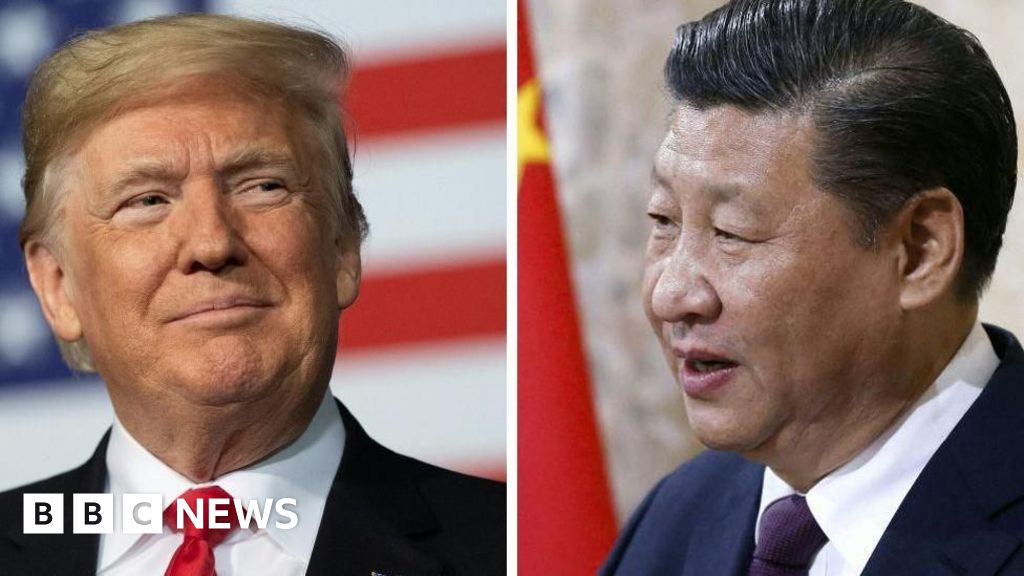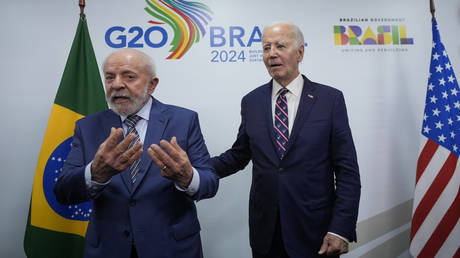Inside Walmart’s ambitious plan to make your clothes in America again
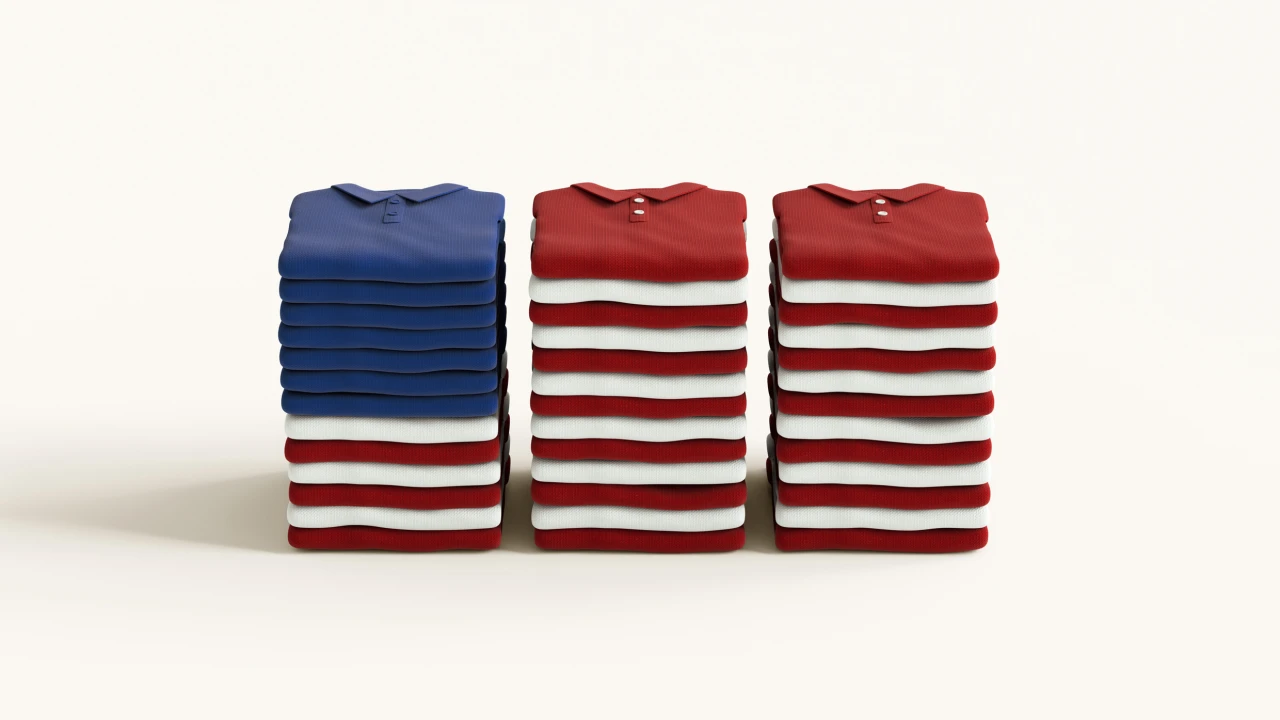
On a crisp day in May, Josh Blackman, a third generation cotton farmer, is sitting atop his 14-foot tall John Deere planter on his family farm in Littleton, North Carolina. The planter is an engineering marvel. Its 10 arms create neat rows in the soil, then drop cotton seeds at the right depth, allowing one man to do the work of 50 laborers. By October, this field will be blanketed with fluffy white bolls of cotton that never fail to take the 34-year-old Blackman’s breath away. “Cotton is so pretty at harvest time,” he tells me.
Blackman’s grandparents established Warren Farms in 1941. Until the 1960s, roughly 95% of the clothes Americans wore were made domestically, so cotton from Warren Farms would travel by truck to nearby mills and factories to become Fruit of the Loom T-shirts and Levi’s jeans. But over the past five decades, the U.S. apparel industry has been decimated. Today, 97% of the clothes that Americans buy is imported, largely from China, Bangladesh, and Vietnam. The majority of Blackman’s crop will be shipped to Asia where it will be turned into fabric, then cut and sewn into garments at low-wage factories.
Blackman often feels he is at the mercy of geopolitical forces. He’s competing with farmers in developing countries who produce more cheaply because they pay lower wages and have weaker environmental protections. China, the world’s biggest cotton importer, has an outsized influence on the commodity’s price. This year, Blackman expects to lose money on his harvest because the price of cotton is less than 70 cents a pound, down about 10 cents from 2024, which was already considered a bad year. “The weather determines the crop, and the market determines what we get for it,” he says. But Blackman believes that if apparel manufacturing returned to the United States, there would be more demand for domestic cotton, allowing him to earn more. “Bringing the factories to America—opening them back up—will create a market for my cotton right here,” he says.
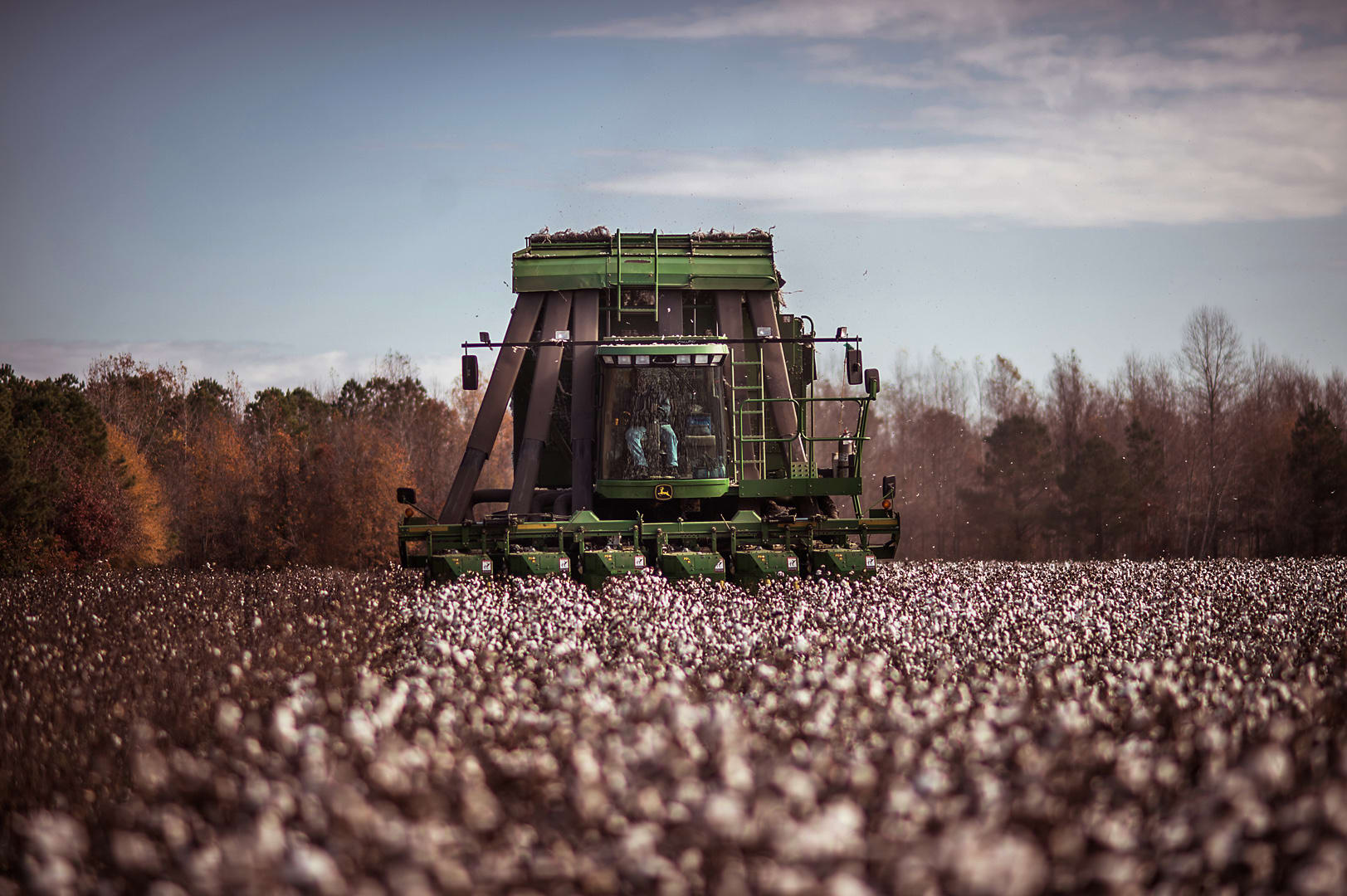
For years, the idea of breathing life back into American clothing factories, reversing half a century of off-shoring, seemed like a pipe dream. But the plate tectonics of the apparel industry are shifting. Over the past decade, dozens of American-made labels like Buck Mason, American Trench, Imogene & Willie, and Duckworth have sprung up, tapping into the skeletal remains of the domestic supply chain. This was a small-scale effort: These high-end brands make clothes for affluent customers who care about sustainability, ethical labor, and durability. But everything changed last summer, when Walmart—the largest company in the world—entered the picture. The retailer dropped a $12.98 T-shirt made end-to-end in the U.S. just in time for the Fourth of July.
Walmart sells an enormous quantity of clothing. Of the $648 billion in revenue it generated last year, Coresight Research estimates that $29.5 billion came from apparel. (By comparison, Gap, Inc. and H&M only generated $15 billion and $22 billion respectively.) The vast majority of clothes Walmart sells is made overseas, predominantly in China. But this American-made T-shirt suggests there’s another way forward.
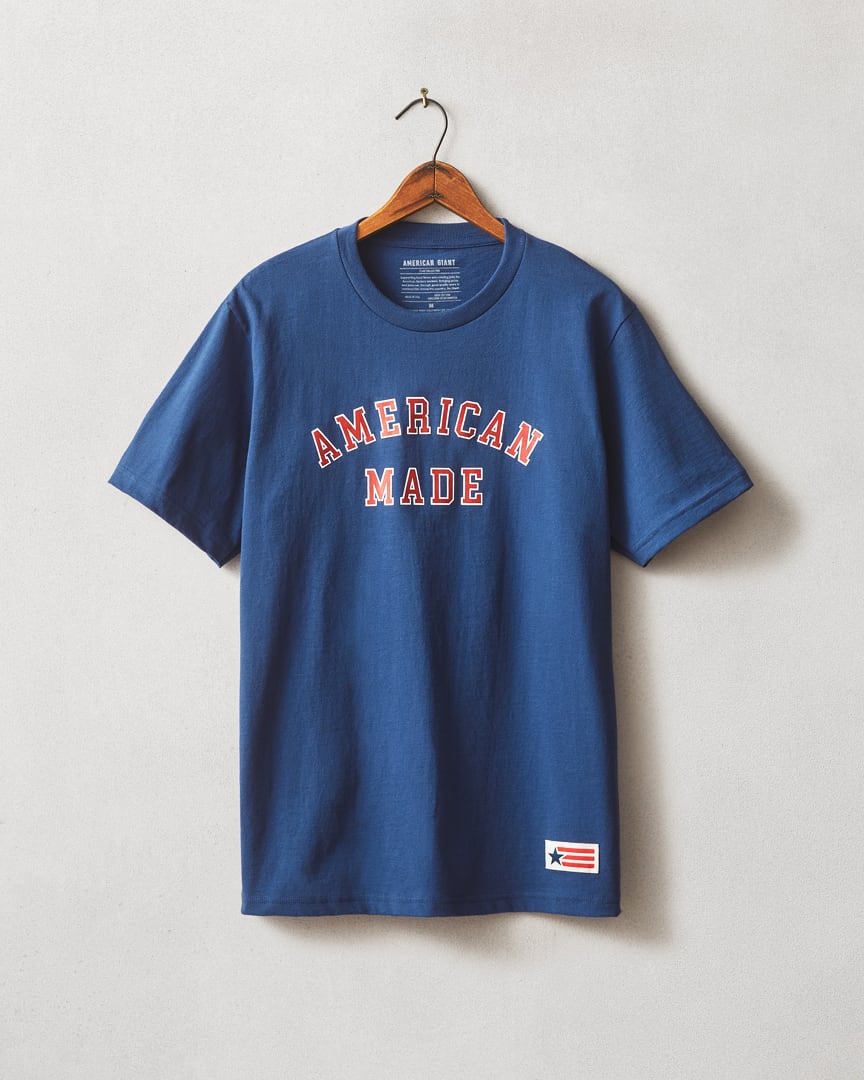
Without a domestic supply chain, Walmart collaborated with an upscale U.S.-made label, American Giant, to make its Fourth of July collection. American Giant has spent the last 12 years building a domestic supply chain and cultivating demand for its $45 t-shirts and $148 hoodies. The T-shirts that came out of this partnership were a hit, with Walmart reportedly selling hundreds of thousands of T-shirts, spurring the two companies to make a $39.98 hoodie that similarly flew off the shelves. Now Walmart is building an ongoing partnership with American Giant to produce even more garments.
President Trump’s pursuit of steep tariffs on China (currently 30%) and other apparel-producing countries, including Vietnam, Bangladesh, and Cambodia (at a universal baseline of 10%), have put Walmart’s efforts in a new light. Walmart CEO Doug McMillon spent part of his last earnings call outlining ways the company was managing the “cost pressure” from tariffs, and made news when he noted that prices would go up. Whether Trump’s tariffs are intended to restart American manufacturing or simply extract more money from trading partners remains to be seen. But the jolt to the supply chain has forced large retailers and brands to consider what it would take to make their products domestically.
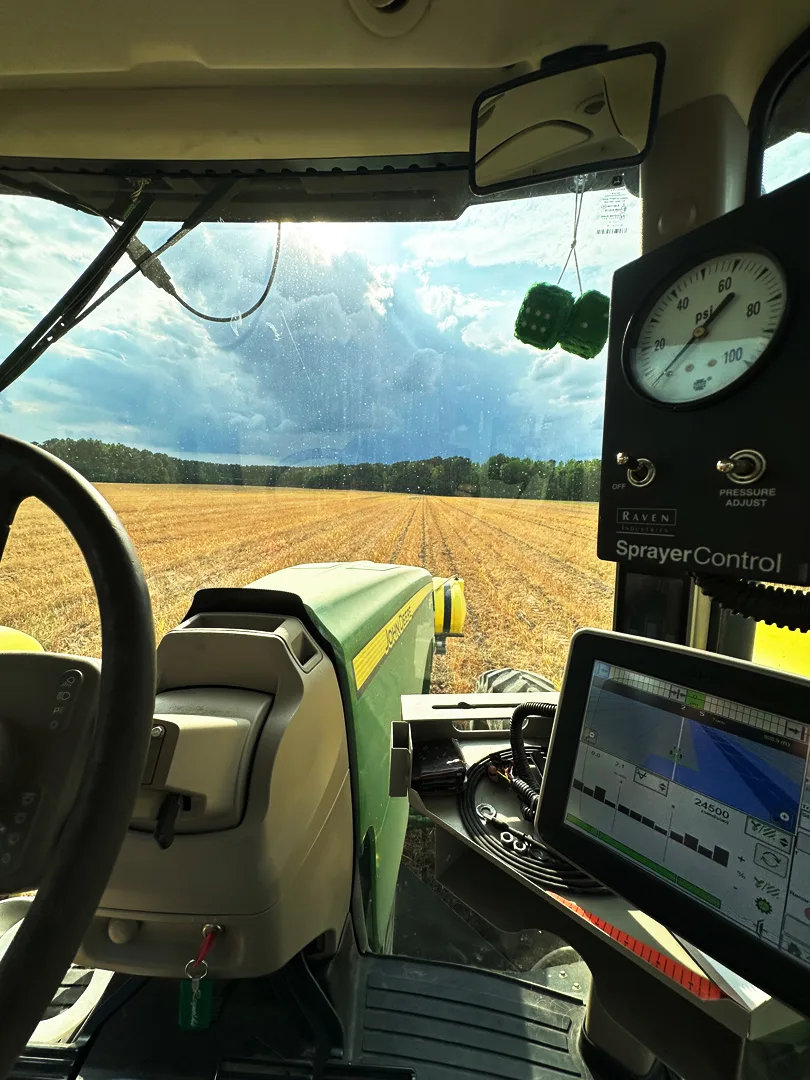
Walmart, for one, is making a concerted effort to build an apparel supply chain in the United States. Today, American-made garments still only comprise a tiny fraction of Walmart’s overall apparel sales. But as the company places enormous garment orders—many times what startups like American Giant makes in a year—it offers a glimpse into what 21st century apparel manufacturing in America could look like. To produce at these volumes, factories of the future are likely to be powered by robots and AI, and managed by a relatively small group of highly skilled workers, rather than the labor-intensive operations of the past.
The possibility of making clothes in America is closer than it has been for decades. But it is still unclear whether this reality will materialize. Much will depend on whether Walmart continues its commitment to American-made apparel and spurs other large retailers to do the same. And whether Trump’s tariffs stay in place long enough to motivate brands to set up supply chains in the United States.
At Warren Farms, Blackman’s face lights up when he hears about Walmart’s ambitions to make clothes in America. His cotton goes to a yarn mill that supplies American Giant, which means it could very well end up in the next batch of Walmart T-shirts and hoodies. “I love growing cotton,” he says. “It’s all I’ve ever known. I want to be able to keep doing it.”
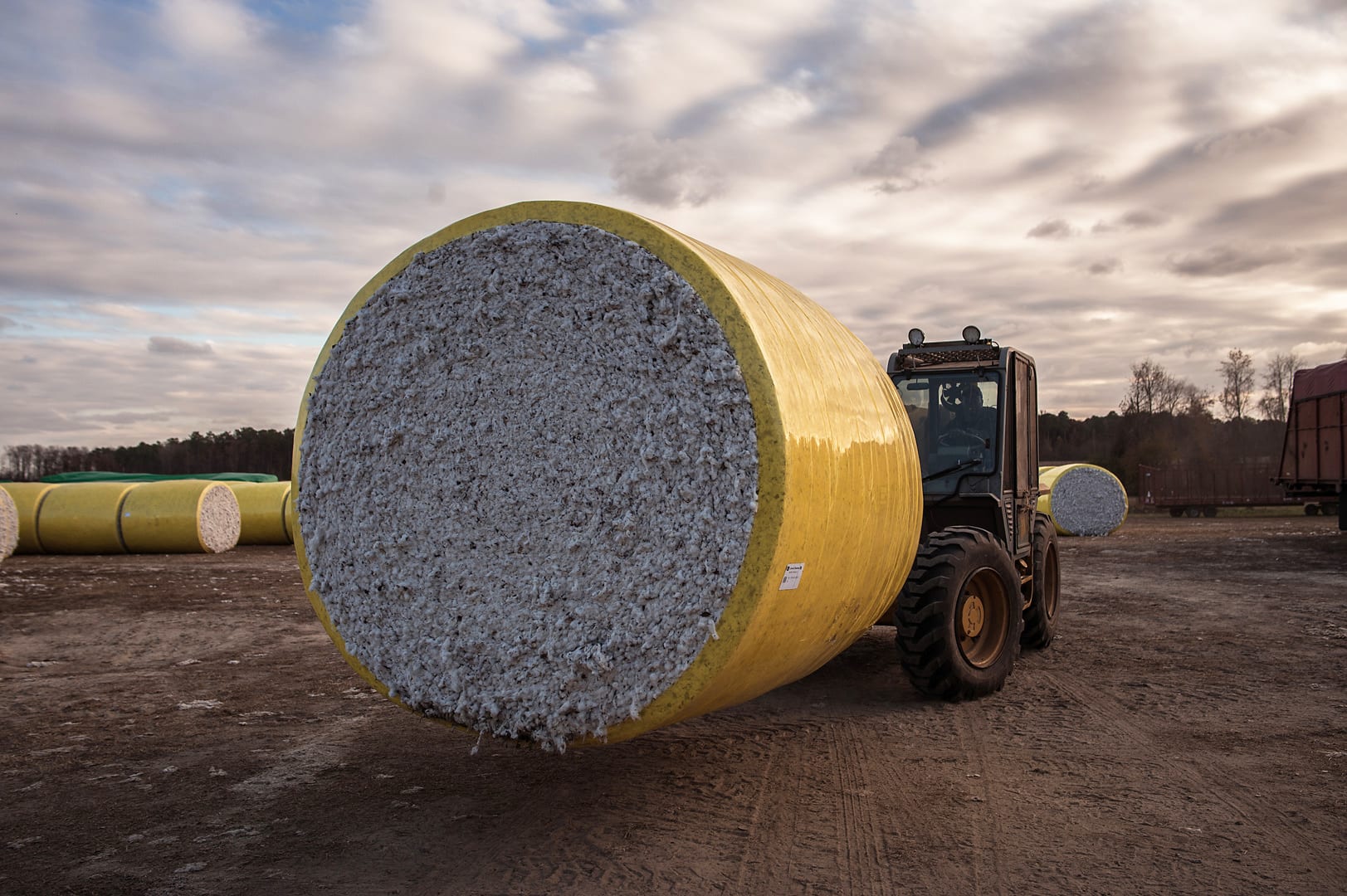
When Walmart Met American Giant
It was 2022 and Bayard Winthrop should have been on top of the world. A decade prior, he had quit his job at Chrome, an outdoor apparel brand, to launch American Giant. In the face of naysayers who told him his dream of making clothes in America was impossible, Winthrop had succeeded. American Giant was profitable and generated upwards of $10 million in annual revenue. Its 50 employees were constantly working to keep up with the demand for the brand’s growing assortment, which now includes jeans, dresses, and collaborations with celebrities like Jason Kelce.
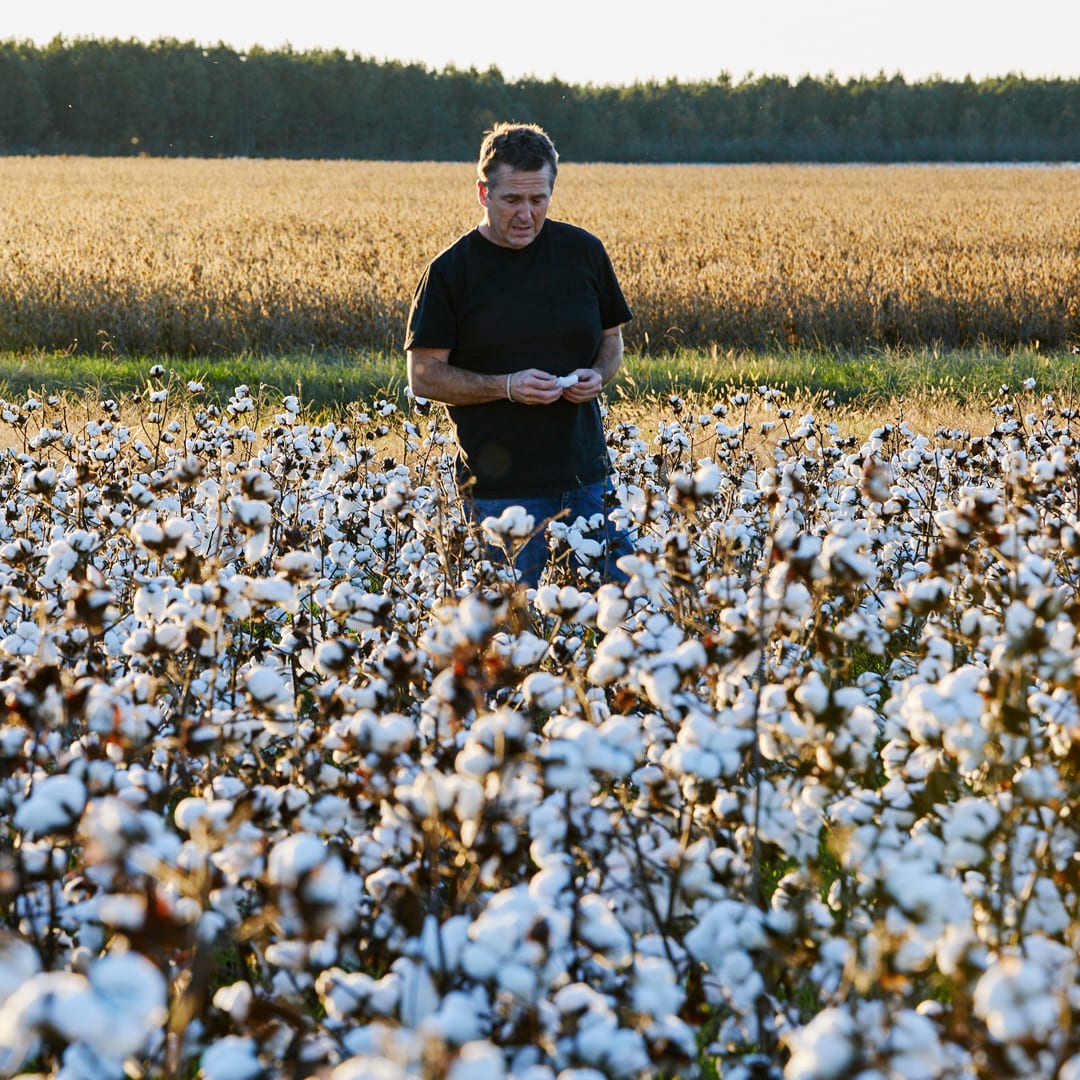
Despite American Giant’s success, Winthrop wasn’t satisfied. He had launched his brand to create the kind of durable, high-quality clothing he remembered from his childhood in the 1970s, when brands like Wrangler and Pendleton were still produced domestically. Back then, those brands were affordable to working-class people. But American Giant, which has a cult following among Bay Area tech executives, is decidedly premium.
Winthrop knew that if he could increase the size of his production runs, he would be able to create the same high-quality products for lower prices. In other words: He needed a quick growth hack. It dawned on him that the solution was for a large scale, mass market retailer to tap into his supply chain. And the most obvious one was Walmart.
In 2021, Walmart had announced it was investing $350 billion in sourcing American-made products over the next 10 years. The investment would go into everything from food (which makes up 60% of Walmart’s sales) to packaging to electronics. This initiative would create jobs and make Walmart more resistant to the supply chain shocks we have seen in recent years resulting from COVID and Trump’s tariffs.
Walmart has said that textiles are one of the hardest categories to make domestically, because the industry has been largely off-shored. Still, Walmart is slowly making inroads. In 2022, it encouraged one of its largest India-based suppliers, Classic Fashion, to open a cut-and-sew factory in Santa Ana, California, staffed by 125 workers who produce exclusively for Walmart. It partners with cutting-edge American tech startups like Unspun, which automates the cut and sew process, and Rubi Laboratories, which creates fibers using carbon dioxide.

“Look, there are many things that I disagree with Walmart about,” Winthrop says. “But no other retailer has done anything even close to what Walmart has done to support American manufacturing.”
In the summer of 2023, Winthrop went on Mike Rowe’s The Way I Heard It podcast to talk about American Giant. During the chat, Winthrop gave Walmart kudos for its commitment to domestic manufacturing. A few weeks after the show aired, Winthrop got a call from Walmart executives inviting him to the company’s Bentonville, Arkansas, headquarters. “On that podcast, we got to hear his thought process not only about U.S. manufacturing, but Walmart’s role in it,” says Avinash Bhaskar, VP of private brands at Walmart. “We wanted to explore a possible partnership.”
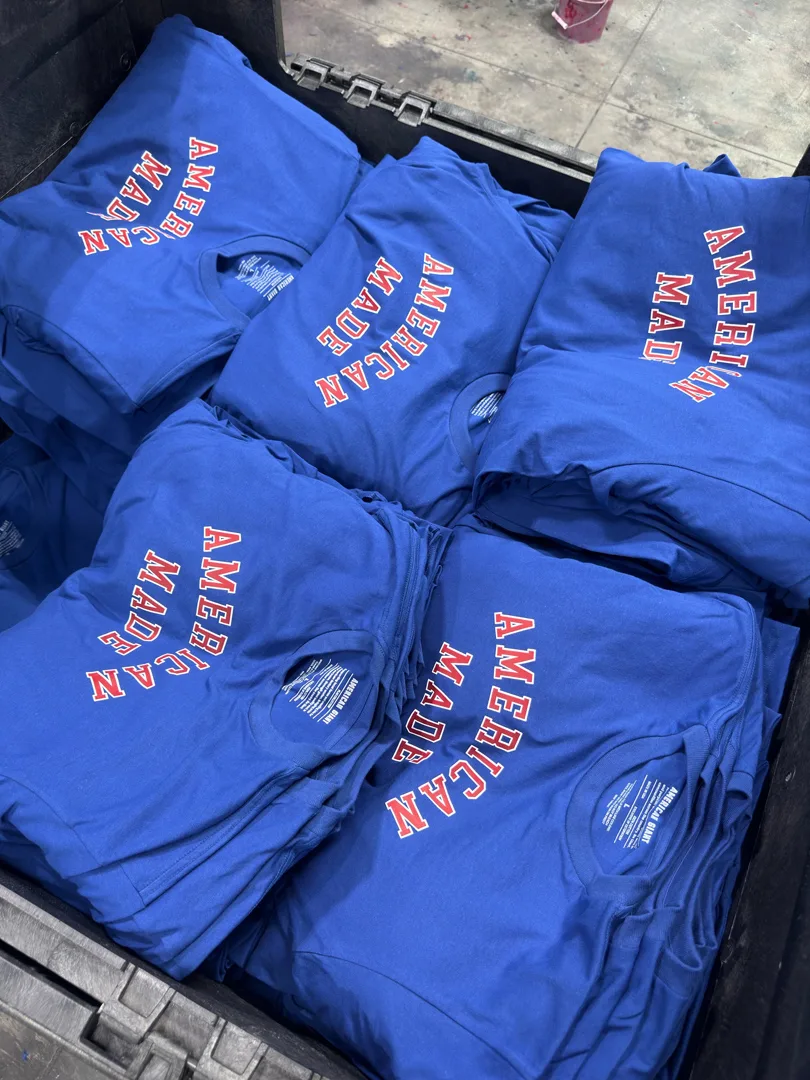
After a year of close collaboration between American Giant and Walmart’s sourcing teams, the two companies launched co-branded T-shirts that cost $12.98. Six months later, they launched a sweatshirt that cost $38.98. Walmart won’t share exactly how many T-shirts and hoodies it has produced, but people familiar with the matter say it is in the hundreds of thousands of units, many times bigger than a typical American Giant production run. These garments have sold well, prompting Walmart to turn the pilot project into an ongoing relationship. American Giant has also begun receiving calls from other mass-market retailers interested in exploring similar collaborations. (Winthrop declined to share which specific companies, since discussions are ongoing.)
The garments in the Walmart line are manufactured through the same supply chain that American Giant uses for its more expensive products. But making a large volume of a single garment immediately brings down the cost per unit by five or 10 times, Winthrop explains. Making a few thousand units of clothing is extremely expensive, because a factory takes time to train workers on how to cut and sew the product, and must use whatever equipment they have on hand, even if it is not the most efficient. When a factory makes hundreds of thousands of the same garment, workers get faster and more accurate; the factory can also invest in tools like automatic label makers and more powerful fabric cutters. “There’s an initial startup cost for making a garment,” Winthrop says. “With a large volume, factories can amortize those costs knowing they have months of production ahead. They can accept a lower margin in exchange for predictable, reliable volume.”
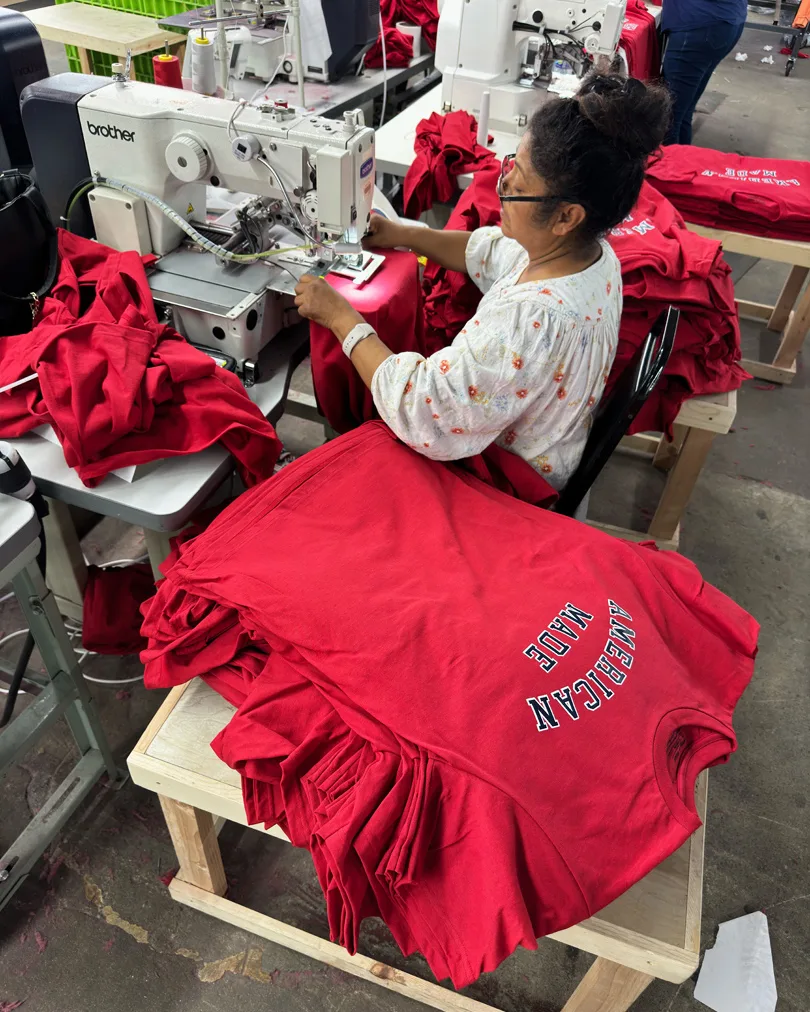
To make the Walmart collection even more affordable, the team picked different materials and fabrications than a typical American Giant product. For instance, the Walmart shirts use widely available cotton yarns, versus more luxurious yarns like Supima, which can add up to $15 to the cost of a T-shirt. Walmart also uses fabric that is knit in a tube, cutting out the labor of sewing side seams, which costs about 50 cents more per T-shirt.
In spite of all these efforts to reduce costs, American factories aren’t able to sell their products to Walmart as cheaply as Asian manufacturers, Bhaskar says. But there are other advantages to making products here. Since the factories are closer to the customer, they can make products with shorter lead times, making it easier for Walmart to manage inventory. This means Walmart is less likely to buy too many units, which could end up marked down or unsold. “It was a puzzle for us to think about how to make this product financially workable,” Bhaskar says. “But we realized it was a completely different cost equation from manufacturing overseas.”
Still, it’s important to remember that Walmart’s commitment to these American suppliers is relatively superficial. Walmart has not invested directly in these factories, or in American Giant. It just places large purchase orders, which gives these suppliers cash upfront, which they can use to make their own investments in technology or staffing. “We think about the art of the possible with the purchase order,” says Kyle Carlyle, Walmart’s VP of supply and sourcing innovation. “As I think about the supply chain, it allows Bayard and others to think about the volume of fabric they need or different points they can automate.”
But experts point out that Walmart could pull out of these relationships at any time, particularly if it faces other economic pressures, including tariffs. “A big order from Walmart is a bonanza for these suppliers,” says Rachel Slade, author of Making It In America, a history of manufacturing and labor in the United States. “But will Walmart place the same order next year?”

How Walmart Drove Factories Overseas
It’s ironic that Walmart’s team depends on a small startup to source apparel in the United States. In the first two decades after Walmart was founded in 1962, it grew into one of the biggest buyers of American-made apparel. But, as Slade writes, when Walmart set out to dominate mass market retail in the 1980s, it focused on delivering the lowest possible prices. “Walmart’s scale meant that it could pressure manufacturers to sell their products for less money,” Slade says. “Eventually, the manufacturers had to go overseas, where labor was cheaper, if they wanted to retain these contracts with their biggest buyer.” Today, Walmart makes roughly 80% of its discretionary merchandise, which includes clothing, in China, according to the Alliance for American Manufacturing.
Retailers weren’t the only ones driving down the price of goods. Geopolitical forces were making off-shoring easier, as well. In 1978, the Chinese government opened its economy to foreign trade and subsidized its burgeoning apparel industry to make it more globally competitive. Meanwhile, the U.S. government was eager to give Americans access to cheaper products made in low-wage countries. In 1992, the U.S. signed NAFTA, which eliminated tariffs against Mexico, and in 2001, when China joined the World Trade Organization, U.S. companies had low-tariff access to Chinese goods. It didn’t take long for America’s clothing factories to hollow out. Between 1990 and last year, the number of Americans working in clothing manufacturing shrank from 900,000 to 84,000.
America quickly became flooded with cheap clothes. But these low-priced T-shirts and jeans came at other costs. Many American towns built around the textile industry (such as Fall River, Massachusetts, or Gastonia, South Carolina) never recovered when major employers closed, leading to blight. Mill and garment factory jobs were never high paying, but they provided livable wages and steady employment. “There are now pockets of persistent poverty,” says David Robinson, director of external affairs at Manufacturing Renaissance, a Chicago-based organization that helps people find work in manufacturing. “No other industry has come close to manufacturing in terms of creating opportunities for people to enter the middle class.”
The explosion of cheap clothing has also led to environmental catastrophe. The $2.5 trillion global apparel industry produces hundreds of billions of garments annually, which generates between 4% and 8.6% of global greenhouse gas emissions. In many Asian manufacturing hubs, there are weaker environmental regulations and worker protections than in the U.S., which means both the planet and people are regularly harmed in the process of making clothes.
President Trump claims that he is trying to reverse decades of off-shoring with his tariffs. Many who support American manufacturing believe that some sort of tariff regime is good because it could even the playing field. “Tariffs are a really interesting tool that the U.S. has used since its founding,” Slade says, pointing out that the U.S. used tariffs to protect its textile industry throughout the 18th and 19th century. “The United States can realign pricing to reflect the fact that we regulate industry because we believe in living wages, safe working conditions, and not turning rivers into flammable liquids.”
The problem, though, is that the Trump administration has unleashed the tariffs haphazardly, making it difficult for companies to shift their supply chains to the United States. Building new factories in America is a slow, expensive process and it is unclear how long the current tariffs will stay in place. “We need to create an environment that can give companies the assurance to make long-term investments,” says Sheng Lu, director of graduate studies in the department of fashion and apparel studies at the University of Delaware. “But right now, I only see uncertainties. I don’t even know what the tariffs will look like a month from now, and building a new factory requires a five- or 10-year market outlook.”
Walmart, thanks to its large size and profit margins, is capable of taking a longer view on American manufacturing. In 2013, when President Obama was in office, Walmart made its first $250 billion commitment to sourcing products domestically over the following decade. In 2021, it made a second $350 billion decade-long commitment. According to Walmart’s Carlyle, one reason the company is so focused on domestic manufacturing is research showing that it is important to its customers: In 2020, Walmart conducted a survey with BCG in which 85% of its clientele said that it was important for retailers to carry products made or assembled in America. “We’re trying to figure out how we can make this a priority because we know this is what our customers want,” Carlyle says.
Walmart says domestic sourcing could support the creation of an estimated 750,000 new jobs. Many of these workers would be likely to be Walmart customers, too. According to Jessica Delton, a history professor at Skidmore and author of The Industrialists: How the National Association of Manufacturers Shaped American Capitalism, Walmart has long been in the business of hiring from among its customer base. “They opened up in poor, rural areas that had been neglected by other retailers,” she says. “They could sell things cheaper to these people, but also offer them jobs. Walmart put money in their pockets they could then turn around and spend at Walmart.”
Still, Walmart’s entire business is built on delivering low prices. And its executives are aware that its customers have a threshold for how much more they are willing to spend on American-made goods. “Our biggest challenge was to make the cost palatable to the customer,” says Bhaskar.
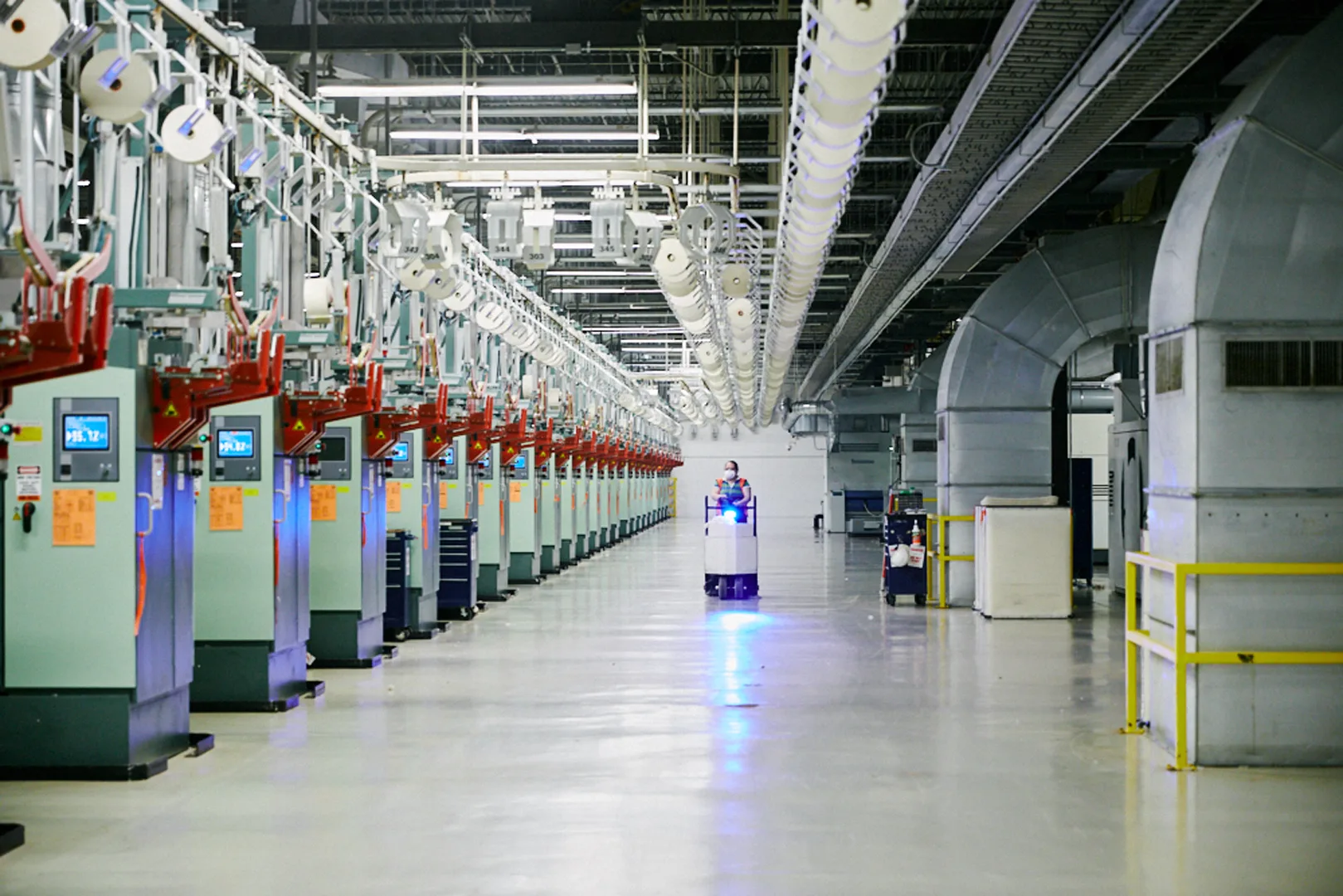
The Factory of the Future
After Warren Farms is done harvesting each fall, its newly picked cotton makes the four-hour drive to Parkdale Mills, one of the world’s largest yarn manufacturers and the largest buyer of U.S. cotton. The majority of Parkdale’s yarn is exported overseas, mostly to China, where it is woven into fabric. But a tiny fraction also goes into making American Giant products—and that figure is growing, thanks to the Walmart collaboration.
Founded in 1916, when the U.S. was still a major player in textile production, the Gastonia, North Carolina-based Parkdale bought raw cotton from farms throughout the South and spun it into yarn. Spinning machines already existed back then, but the process was still labor-intensive, as hundreds of workers carried heavy bales and fed them into the equipment to produce 900,000 pounds of yarn thread annually.

Today, this facility is equipped with cutting-edge machinery from Germany and Switzerland. As a result, it produces two million pounds of yarn every week with only 23 workers. Fluffy bolls of cotton flow through pipes on the ceiling and walls, depositing them in machines that clean the fibers, comb them out, and spin them into filaments. Other machines wind the thread into spools and package them to be shipped off to fabric mills. Today, there are few people on the factory floor; instead, humanoid robots carry boxes around on trays. One abruptly stops a few feet away from me when it senses I am nearby.
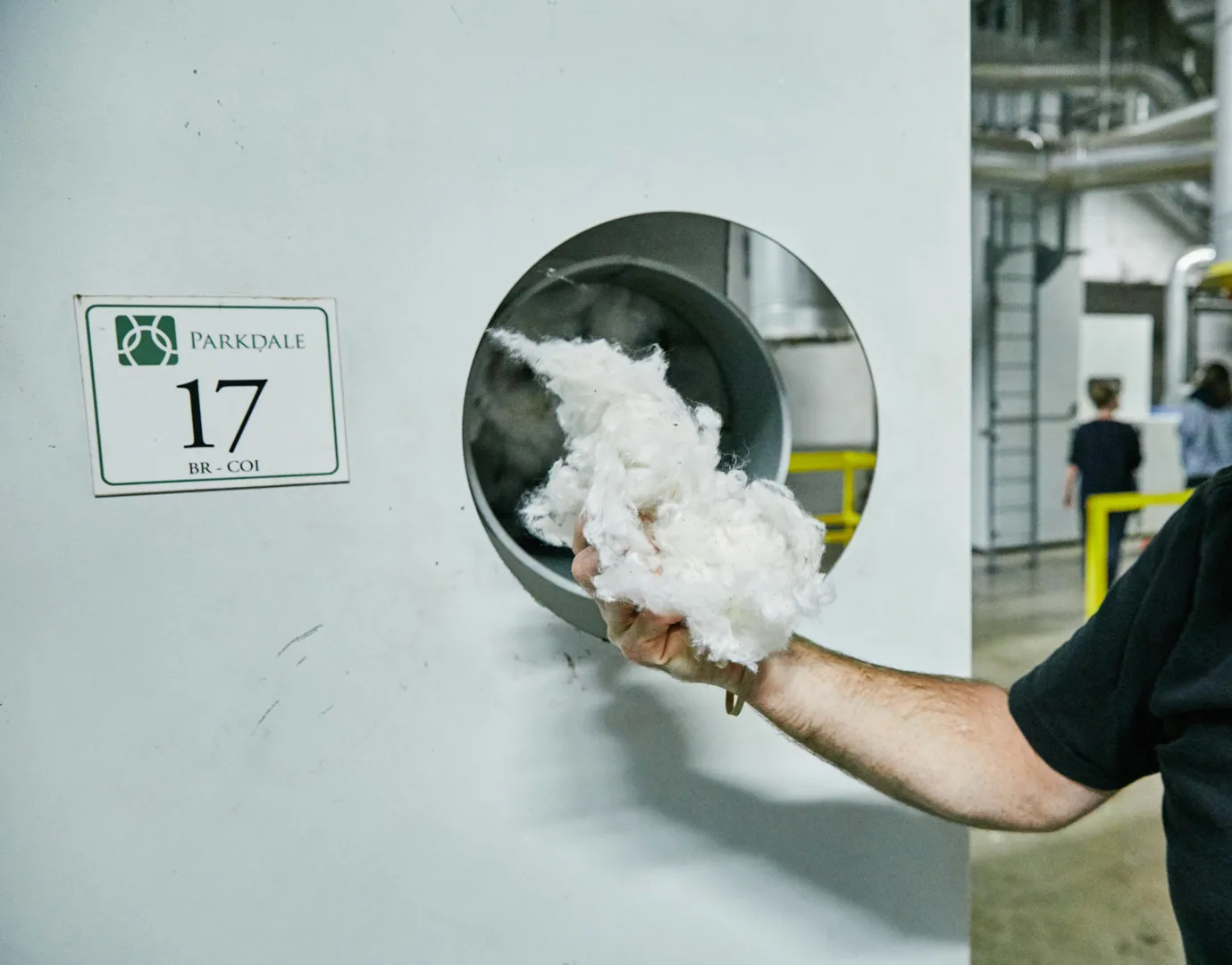
Matt Hardegree, the plant manager, began working in a yarn-making plant in 1980, right out of college. Growing up near cotton fields in Alabama, he was used to seeing two or three mills in every town. But when he started working in mills himself, the off-shoring was already underway. “The smallest, the oldest, the weakest, the most out of date, got eaten up first,” Hardegree says. “The strongest survived.”
Parkdale was the strongest. For years, the company poured its profits into buying the latest yarn-making machinery. This allowed it to beat out competitors and buy out other American mills. Today, it employs 4,500 people across 19 mills in the United States, and six in South America, generating upwards of $1 billion in annual revenues. It has managed to remain relevant globally, competing with high-tech mills in China. Hardegree has watched this play out over 45 years, during which he’s learned how to operate increasingly complex equipment. He takes me across the floor, pushing buttons to pause the machines so he can hand me pieces of cotton and yarn threads to touch.
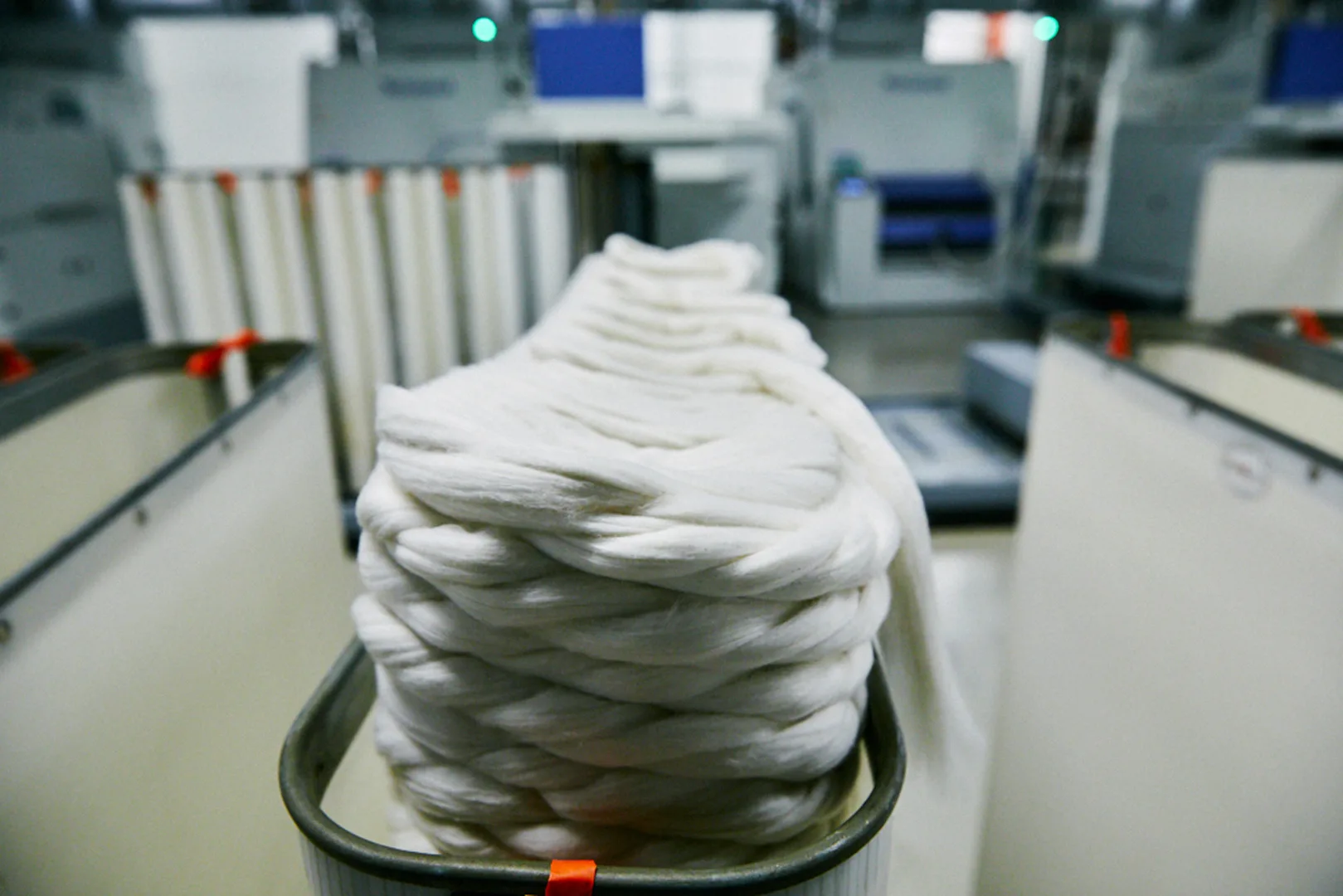
Many Americans’ image of apparel manufacturing is stuck in the ’60s and ’70s, the last time factories were still thriving here. But the industry has evolved. Much of the process is automated, from Josh Blackman’s cotton planting machines to Parkdale’s yarn mills. These days, most of the technology in apparel manufacturing is developed overseas rather than here in the United States. “The American apparel industry is perceived to be in secular decline” says Steven Kurutz, author of American Flannel, about the new generation of fashion labels building U.S. supply chains. “Bright young people don’t want to go into an industry like this. It is engineers in China, and other places with robust garment industries, that see the value in coming up with breakthroughs.”
American manufacturers are also less competitive when it comes to the low-tech, labor-intensive parts of the apparel industry, namely cutting and sewing. American Giant owns a knitwear factory in Middlesex, North Carolina, but it was too small to fulfill the large orders that Walmart has brought in. Winthrop ended up finding suppliers in the Los Angeles Garment District. “Cutting and sewing is where you hit a labor log-jam,” he says. “Our access to high-quality labor in Los Angeles was 20 times what it is in rural North Carolina.”
Even in Los Angeles, though, it’s hard to find workers who are willing to do the repetitive labor of sewing hundreds of garments a day for low wages. Most of the people staffing these factories are immigrants from Mexico and South America who learned how to sew in factories there. According to Bureau of Labor Statistics data, there are nearly half a million open manufacturing jobs right now in the U.S., whereas workers are lining up for factory jobs in Vietnam and Mexico.
“The U.S. is an advanced economy with abundant capital and technology, while less advanced economies, including China, Vietnam, and Bangladesh, are abundant in cheap labor,” says Sheng Lu, of the University of Delaware. “We’ll never have the comparative advantage in the labor-intensive parts of garment-making, like cut and sew.”
Many aspects of cutting and sewing have been automated and improved over the decades. For instance, digital pattern making reduces wasted fabric, while laser cutters precisely slice through large volumes of cloth. But there hasn’t yet been a technological leap to automatically turn fabric into garments. Ken Pucker, professor of the practice at Dartmouth’s Tuck School of Business, says there are clear reasons for this. For one thing, given how depressed wages are in many apparel-producing countries, factories haven’t been motivated to pour money into replacing these workers with machines. “The styles change so frequently that it’s hard to figure out a model that allows for robotics,” says Pucker. “But that doesn’t mean it can’t happen in the future.”
If America is serious about bringing apparel factories back, it will have to invest in automation. Though the Trump administration is levying tariffs in the name of American manufacturing, it hasn’t yet offered any wide-scale support like tax credits or grants to spur innovation in apparel production. And establishing a new industry is expensive: When President Biden set out to develop America’s clean energy industry, he invested $1 trillion in manufacturing and infrastructure. The only way forward for the American apparel sector is for companies to make these investments. So far, few have stepped forward to do so. Walmart, for instance, does not invest in partner factories; it simply places large orders, like it has done with American Giant.
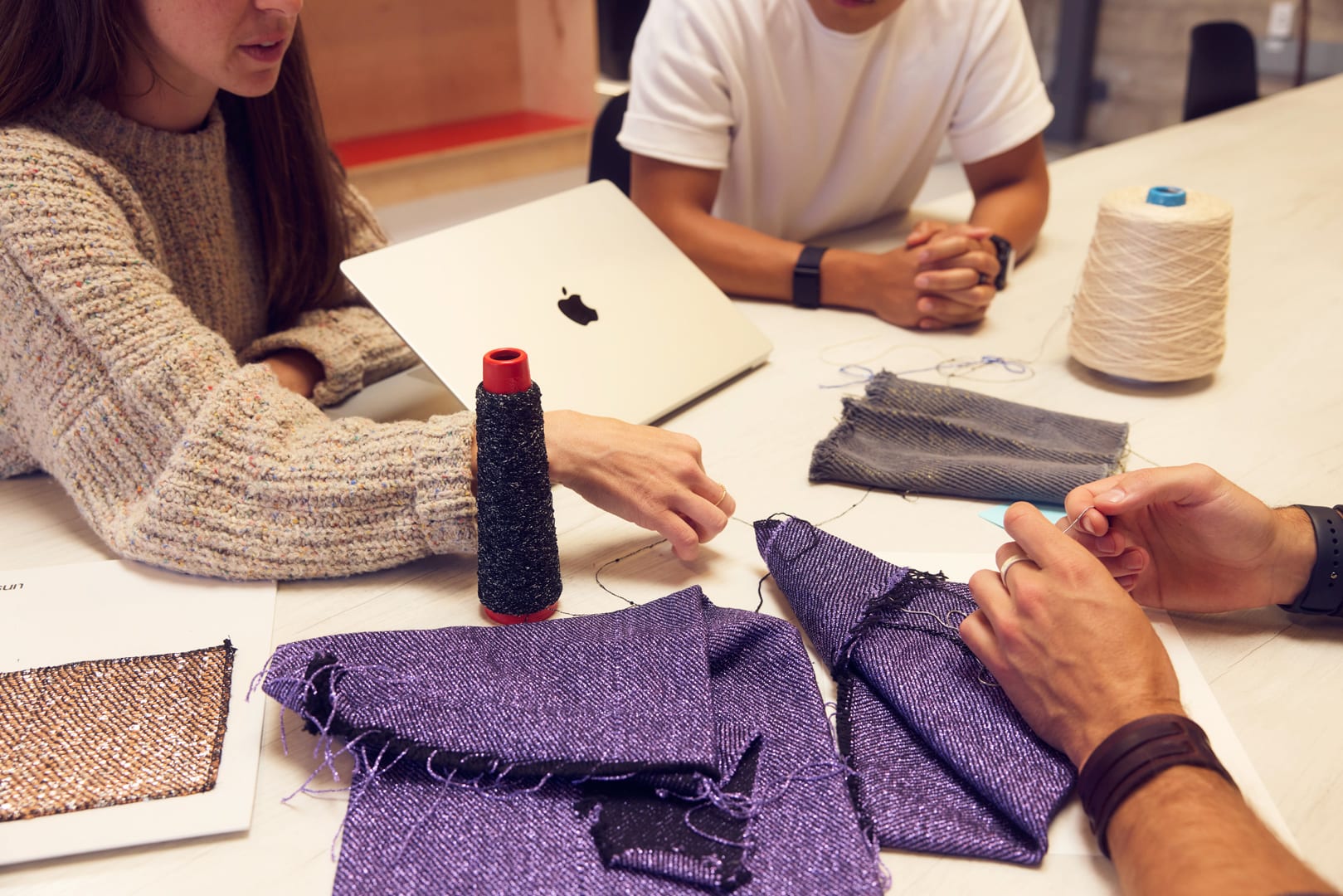
Still, there are signs that Walmart is at least exploring new technologies that could one day replace cutting and sewing. In 2024, Walmart began placing orders with a tech startup called Unspun, which has developed technology that can weave yarn into clothes. “We go from yarn directly to the garment stage, skipping the cut and sew stage entirely,” says Beth Esponnette, Unspun’s founder and CEO.

The approach reduces the need for labor, but it is also better for the environment: There is no fabric discarded in this process, garments can be made on demand, and they can be made close to the customer, reducing transport emissions. Unspun’s goal is to set up 3D weaving machines at “microfactories” around the country, with the goal of having 350 machines operational by 2030. “I think it’s possible to automate many parts of the cut and sew process in the next few decades, but it will take big players like Walmart to achieve scale,” Esponnette says.
Unspun’s technology is still in its infancy, but Walmart is working on a pilot project to explore how Unspun’s technology could be deployed in its supply chain. The first application of this partnership is to create men’s chinos that will be sold at Walmart stores. “We’re exploring technology that could help us leapfrog where we are today,” Carlyle says.
Back in American Giant’s factory in Middlesex, North Carolina, this kind of futuristic factory looks very far away. Winthrop stares out at the floor, where 85 workers are at their stations, manually sewing seams and tracing patterns onto fabric. Their needles bob and weave through fabric as they piece together the heavy-weight hoodies that made American Giant famous. But Winthrop has always had a gift for imagining a different reality; it’s what gave him the courage to start his company to begin with. A decade from now, he believes his factory will be smarter, faster, and more high-tech, churning out millions of high-quality clothes that Americans are proud to wear. “We can’t get there alone,” Winthrop says. “To level up, we need others to buy into our vision.”
What's Your Reaction?
 Like
0
Like
0
 Dislike
0
Dislike
0
 Love
0
Love
0
 Funny
0
Funny
0
 Angry
0
Angry
0
 Sad
0
Sad
0
 Wow
0
Wow
0
.jpg?width=1200&auto=webp&trim=166,0,167,0#)

























































































